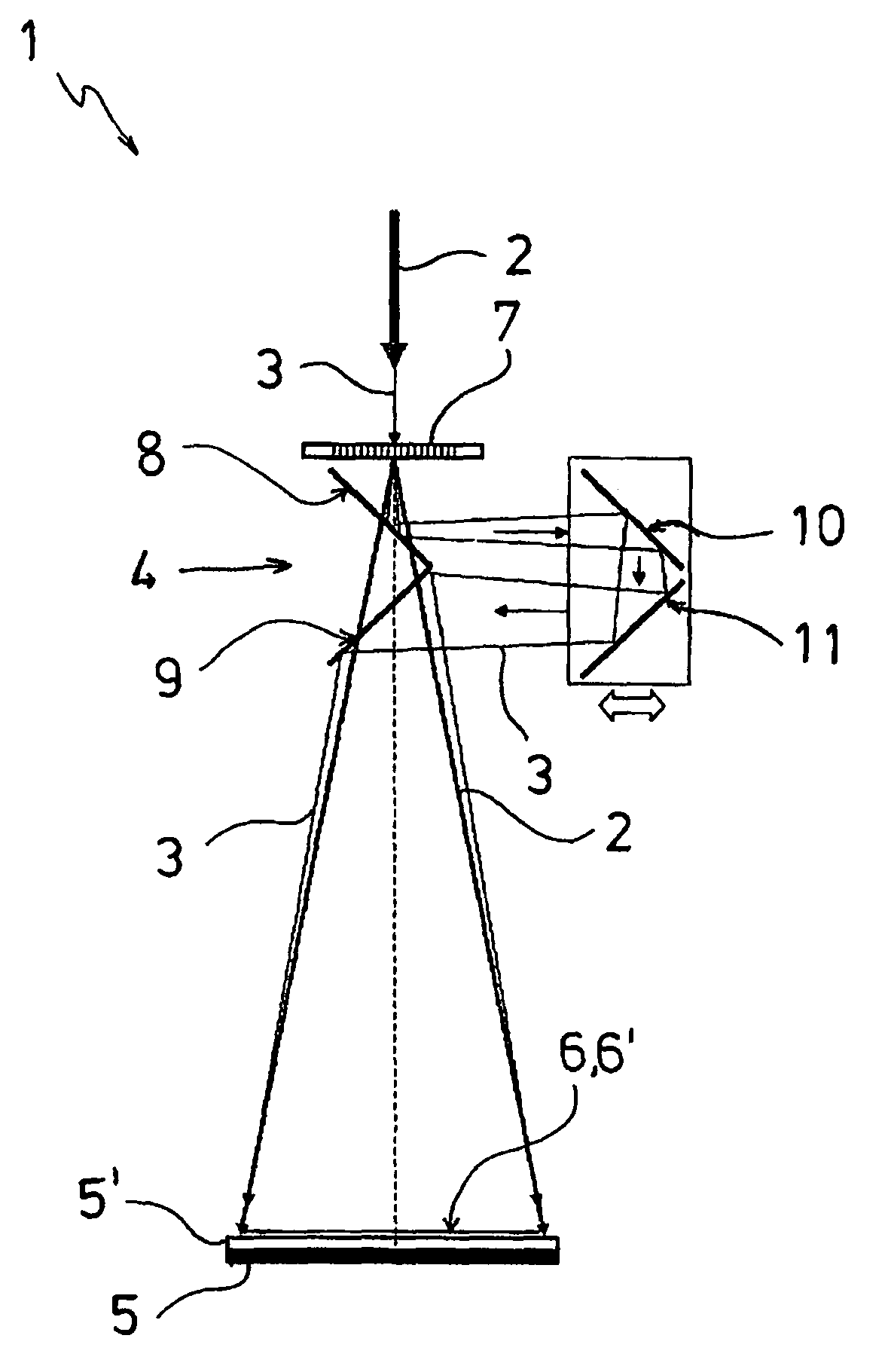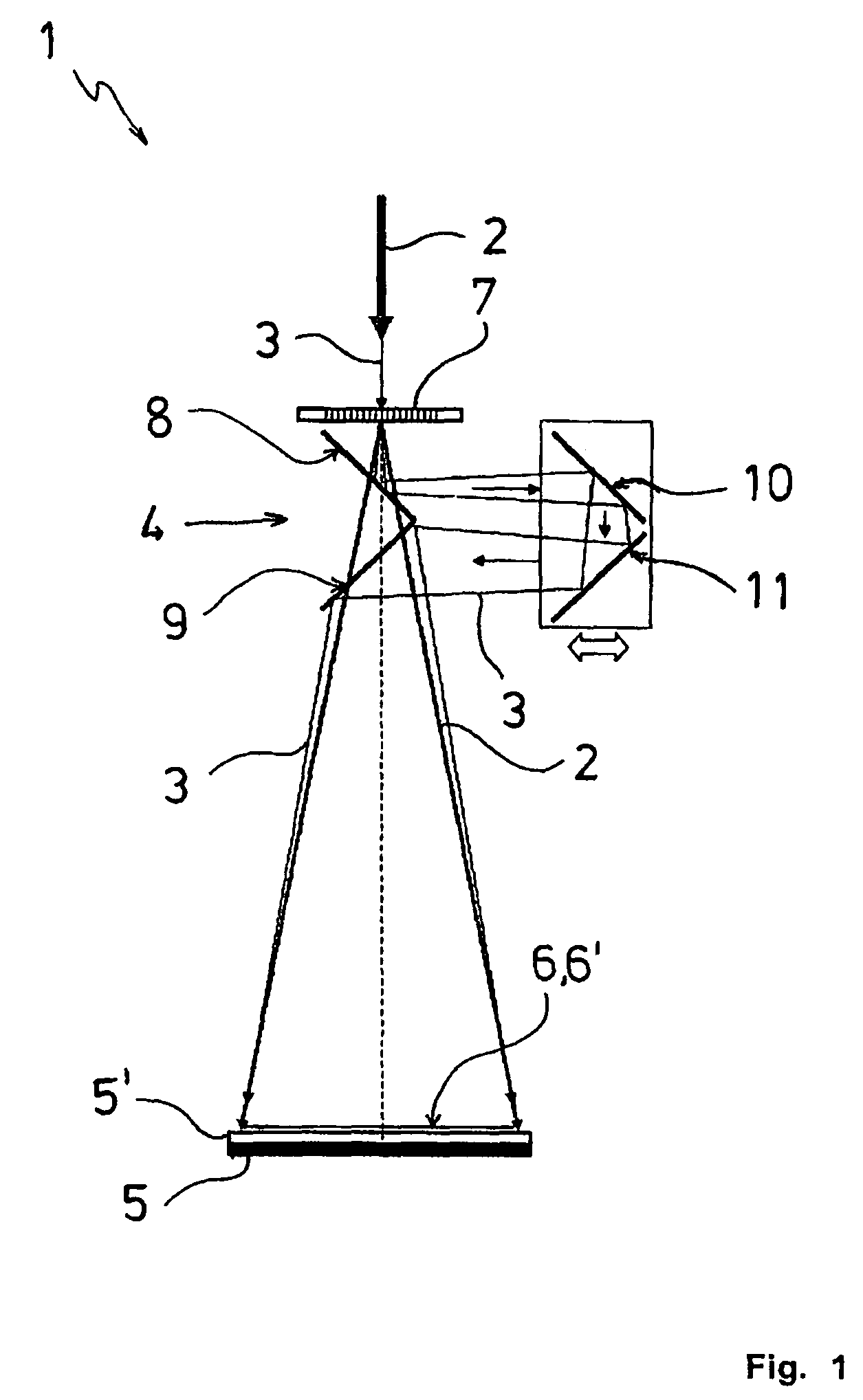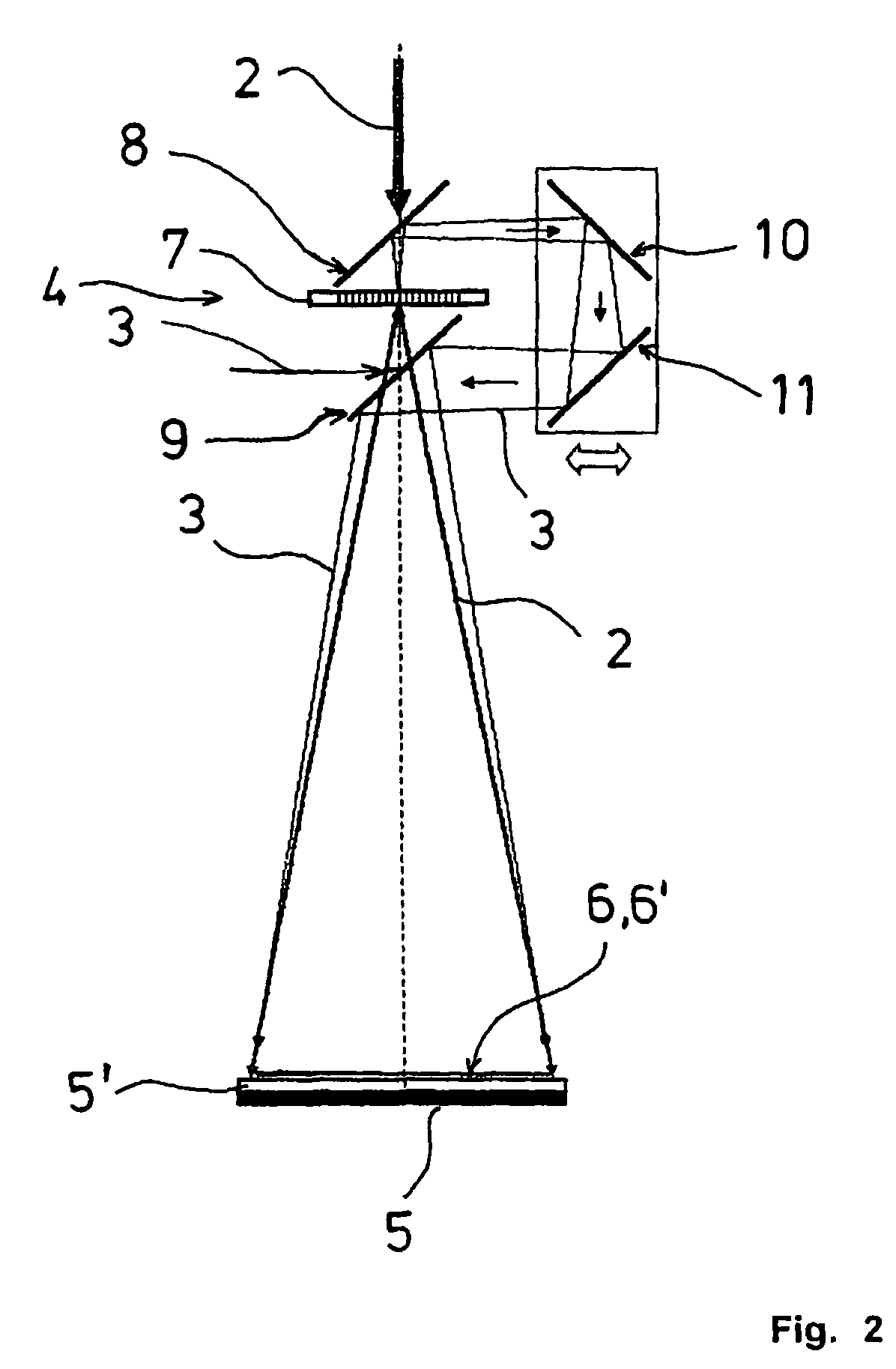Laser operating process and laser device
a laser treatment and laser technology, applied in laser beam welding equipment, welding equipment, metal-working equipment, etc., can solve the problem of difficult continuous monitoring of the process during laser treatmen
- Summary
- Abstract
- Description
- Claims
- Application Information
AI Technical Summary
Benefits of technology
Problems solved by technology
Method used
Image
Examples
third embodiment
[0046]FIG. 3 shows a third embodiment according to the invention where the DOE 7 is operated in reflection mode for the pilot laser beam 3 and the effective laser beam 2. In the laser optics 4, the dichroic mirrors 8, 9 and the deflecting mirrors 10, 11 are arranged opposite the work pieces 5, 5′ exactly as in FIG. 1. However, after exiting from the laser sources, the laser beams 2, 3 run parallel to each other and perpendicular to the optical axis of the laser optics 4. They arrive at the DOE 7 from the same side and are jointly reflected by the DOE in the direction of the first dichroic mirror 8. For this purpose, the DOE 7 is arranged with an inclination of 45 degrees relative to the optical axis of the laser optics 4. The further propagation of the two laser beams 2, 3 after the DOE 7 corresponds to the path described in FIG. 1, with the beam expansion of the pilot laser beam 3 being performed in an analogous way.
fourth embodiment
[0047]FIG. 4 shows the laser device according to the invention that essentially corresponds to the embodiment shown in FIG. 3. After exiting from the laser sources, the laser beams 2, 3 propagate parallel to each other and perpendicular to the optical axis of the laser optics 4, arriving at the laser optics 4 between the dichroic mirrors 8, 9 and the work pieces 5, 5′. By means of a mirror element 12 with total reflection, they are deflected towards the DOE 7, past the dichroic mirrors 8, 9 and the deflecting mirrors 10, 11. The DOE 7 reflects the pilot laser beam 3 and the effective laser beam 2 in the direction of the first dichroic mirror 8. The subsequent expansion of the pilot laser beam 3 is performed as in the embodiments 1, 3 described above.
[0048]FIG. 5 shows another embodiment of the invention where the DOE 7 is also used in reflection mode for the two laser beams 2, 3. It differs from the embodiment shown and described in FIG. 3 in that the first wavelength-independent de...
PUM
| Property | Measurement | Unit |
|---|---|---|
| angle | aaaaa | aaaaa |
| angle | aaaaa | aaaaa |
| wavelengths | aaaaa | aaaaa |
Abstract
Description
Claims
Application Information
 Login to View More
Login to View More - R&D
- Intellectual Property
- Life Sciences
- Materials
- Tech Scout
- Unparalleled Data Quality
- Higher Quality Content
- 60% Fewer Hallucinations
Browse by: Latest US Patents, China's latest patents, Technical Efficacy Thesaurus, Application Domain, Technology Topic, Popular Technical Reports.
© 2025 PatSnap. All rights reserved.Legal|Privacy policy|Modern Slavery Act Transparency Statement|Sitemap|About US| Contact US: help@patsnap.com



